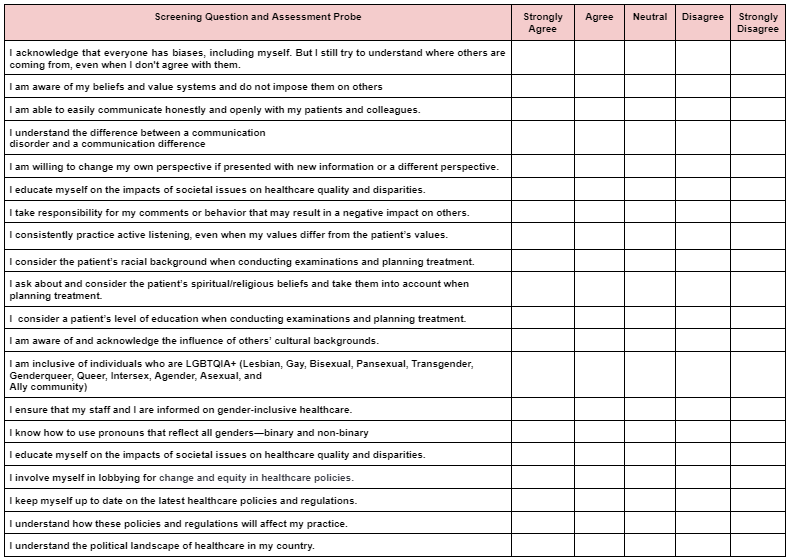-
GeneralGeneral
-
Humanism in Health and Healthcare Homepage
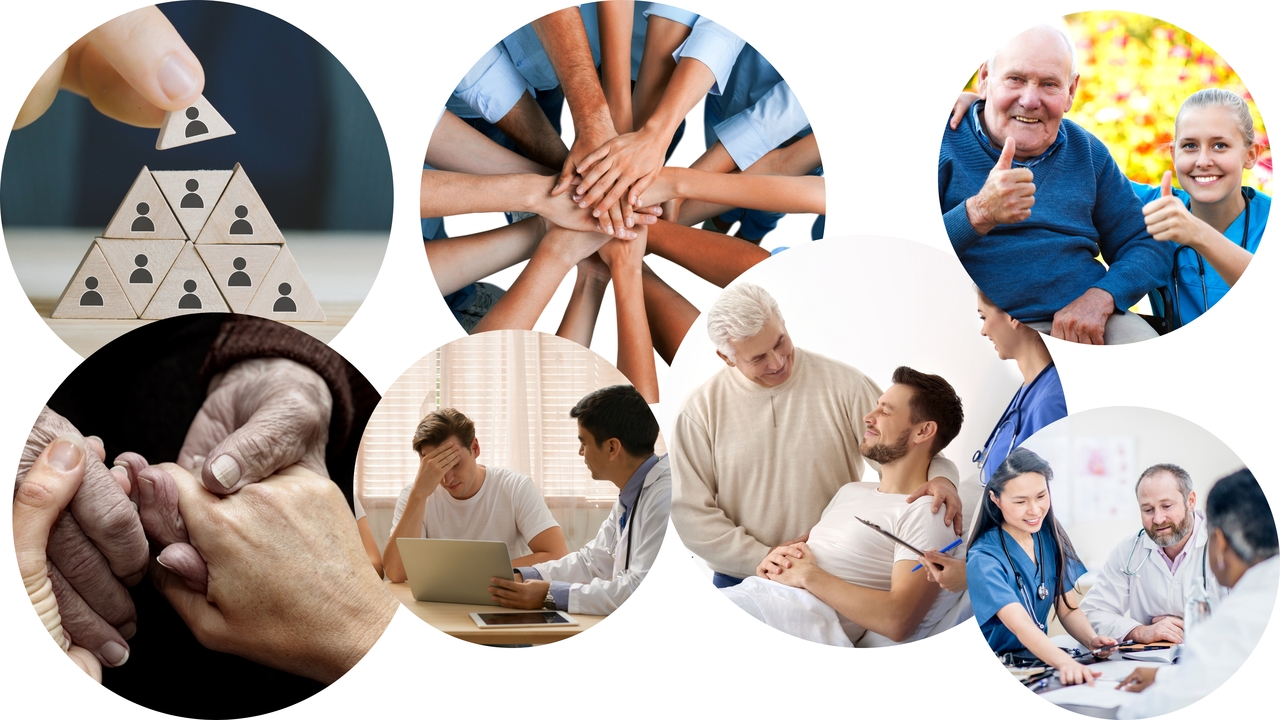

The course Humanism in Health and Healthcare provides foundational theoretical and practical knowledge and skills to help address the complex and multi-dimensional nature of health and illness. This course offers you the opportunity to plan practice humanistic techniques to assist patients during times of illness or stress and provides humanistic strategies to help you work collaboratively with patients to ensure positive outcomes and health behavior changes.
This Humanism in Health and Healthcare course was developed in partnership with the Oakland University -- William Beaumont School of Medicine and The Arnold P. Gold Foundation. Like all NextGenU.org courses, it is competency-based, using competencies from the American Association of Colleges of Nursing, the Association of American Medical Colleges, and the National Board of Osteopathic Medical Examiners.
This course was redesigned in 2022 by Anthony Schlaff MD, MPH; Magali Collonnaz MD, MPH, MSc; Pablo Baldiviezo Rodriguez, MD, MSc, DiplEd; Reisha Narine, MSc; Sherian Bachan, MSc; Seema Persaud, MSc. The original course developers were Jason Adam Wasserman, Ph.D., and Stephen Loftus, Ph.D.; additional content creators are Ashley Inez Garzaniti, MSIV; Nathan Loudon, MSIV; Matthew Drogowski, MD; Dorothy Levine, MD; Lesley Miller, MD; and Hedy S. Wald, Ph.D.
There are 13 modules to complete, which include:
- Module 1. History of Medicine, Modernism, and the Emergence of the Biomedical Model
- Module 2. The Epidemiological Transition and the Humanistic (Re)turn
- Module 3. Medicalization and social control
- Module 4. The Biopsychosocial Model
- Module 5. The Birth of Bioethics and the Evolution of Humanism
- Module 6. The Science of Empathy
- Module 7. Building Empathy: Practices of the Senses
- Module 8.. Empathy in Practice: Narrative Medicine/Narrative Communication
- Module 9. Self Care: Caring for Self to Care for Others
- Module 10. Problems of Otherness and Dilemmas of Difference
- Module 11. Marginalization*
- Module 12. From Cultural Competency to Cultural Humility: Habits of Respectful Curiosity
- Module 13. The Future of Humanism in Health and Health Care
*For module 11, you are to choose at least five lessons to complete from those available, based on your interests as well as your educational and professional needs)
The completion time for this course is estimated to be 69 hours which includes 39 hours of didactics and curated resources and 30 hours of work participating in activities and quizzes to assist the student in the synthesis of the materials. This course is equivalent to 2 credit hours.
At the end of each module, there is a practice quiz with multiple-choice questions. At the end of the course, after you’ve completed each lesson, quiz, and learning activity, you’ll have access to a final exam with multiple-choice questions and a chance to evaluate this course. Once you’ve passed that last test, you will be able to download a certificate of completion from NextGenU.org. We keep all of your personal information confidential, never sell any of your information, and only use anonymized data for research purposes. We are also happy to report your testing information and share your work with anyone (your school, employer, etc.) at your request.
Engaging with this Course:
This free course is primarily intended for public health students, public health professionals, medical students, and clinicians who would like to learn more about prevention and health promotion, as well as the importance of working collaboratively with patients to ensure that their individual needs are met. Clinicians and non-clinicians can take the course as there are resources listed as suitable for both audiences.
To obtain a certificate, a learner must successfully complete:
- all the reading requirements,
- all required quizzes and pass with 70% having unlimited attempts,
- all discussion forums
- all peer activities
- all reflection activities
- a final examination
- the self and course evaluation forms.
NextGenU.org is happy to provide your institution with
- a link to and description of the course training, so they can see all its components, including the cosponsoring universities and other professional organization cosponsors;
- your grade on the final exam;
- your work products (e.g. case study activities), and any other required or optional shared materials that you produce and authorize to share with them;
- your evaluations -- course, and self-assessments;
- a copy of your certificate of completion.
To obtain a degree, NextGenU.org co-sponsors degree programs with institutional partners. To obtain a full degree co-sponsored with NextGenU.org, registrants must be enrolled in a degree program as a student of a NextGenU.org institutional partner. If you think that your institution might be interested in offering a degree with NextGenU.org, contact us.
We hope that you will find this a rewarding learning experience, and we count on your assessment and feedback to help us improve this training for future students.
Here are the next steps to take the course for credit:
- Complete the registration form.
- Take the pre-test.
- Begin the course with Module 1: Introduction to Global Mental Health. In each lesson, read the description, complete all required readings and any required activity, and take the corresponding quizzes.
This course meets nationally approved standards of education developed for the addiction/substance use disorders counseling profession. This course's participants are assured that the continuing education (CE) credits provided will be accepted toward national credentialing by the NAADAC Certification Commission for Addiction Professionals (NCC AP), as well as by many of the individual state licensing/certification bodies in the addiction and other helping professions.
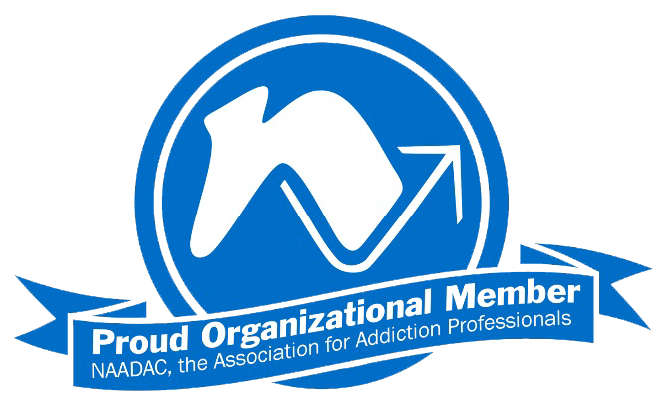
*The previous version of this course is also available here for your reference but is not available for registration. Only students that were registered prior to November 25th, 2022 may complete it.
-
Module 1: History of Medicine, Modernism, and the Emergence of the Biomedical Model
 Competencies covered in this module:
Competencies covered in this module:- Demonstrate knowledge of established and evolving biomedical, clinical, epidemiological, and social-behavioral sciences, as well as the application of this knowledge to patient care (AAMC 2)
- Apply principles of epidemiological sciences to the identification of health problems, risk factors, treatment strategies, resources, and disease prevention/health promotion efforts for patients and populations (AAMC 2.4)
Knowledge for Practice (AAMC)
- Demonstrate an awareness of and responsiveness to the larger context and system of health care, as well as the ability to call effectively on other resources in the system to provide optimal health care. (AAMC 6)
- Advocate for quality patient care and optimal patient care systems (AAMC 6.4)
Systems-Based Practice (AAMC)
- Knowledge - Demonstrate knowledge of the behavioral and social sciences that provide the foundation for the professional competency, including medical ethics, social accountability and responsibility, and commitment to professional virtues and responsibilities. ( AACOM V.)
Professionalism (AACOM)
- Demonstrate an understanding of how patient care and professional practices affect other healthcare professionals, healthcare organizations, and society. (AACOM VII.)
- Demonstrate an understanding of how current issues in the world are affecting health care delivery to patients and the community.
Systems-Based Practice
- Demonstrate an appreciation of the history of and contemporary issues in nursing and their impact on current nursing practice. ( AACN VIII.5)
- Synthesize theories and concepts from liberal education to build an understanding of the human experience.
(AACN)
- Demonstrate knowledge of established and evolving biomedical, clinical, epidemiological, and social-behavioral sciences, as well as the application of this knowledge to patient care (AAMC 2)
-
Module1: Lesson 1: The Emergence of Modern Medicine
Upon completion of this lesson, you will be able to:Learning Objectives:
- Describe the transition from pre-modern to modern medicine and its impact on humanism in health and healthcare.
2 URLs -
Module 2. The Epidemiological Transition and the Humanistic (Re)turn
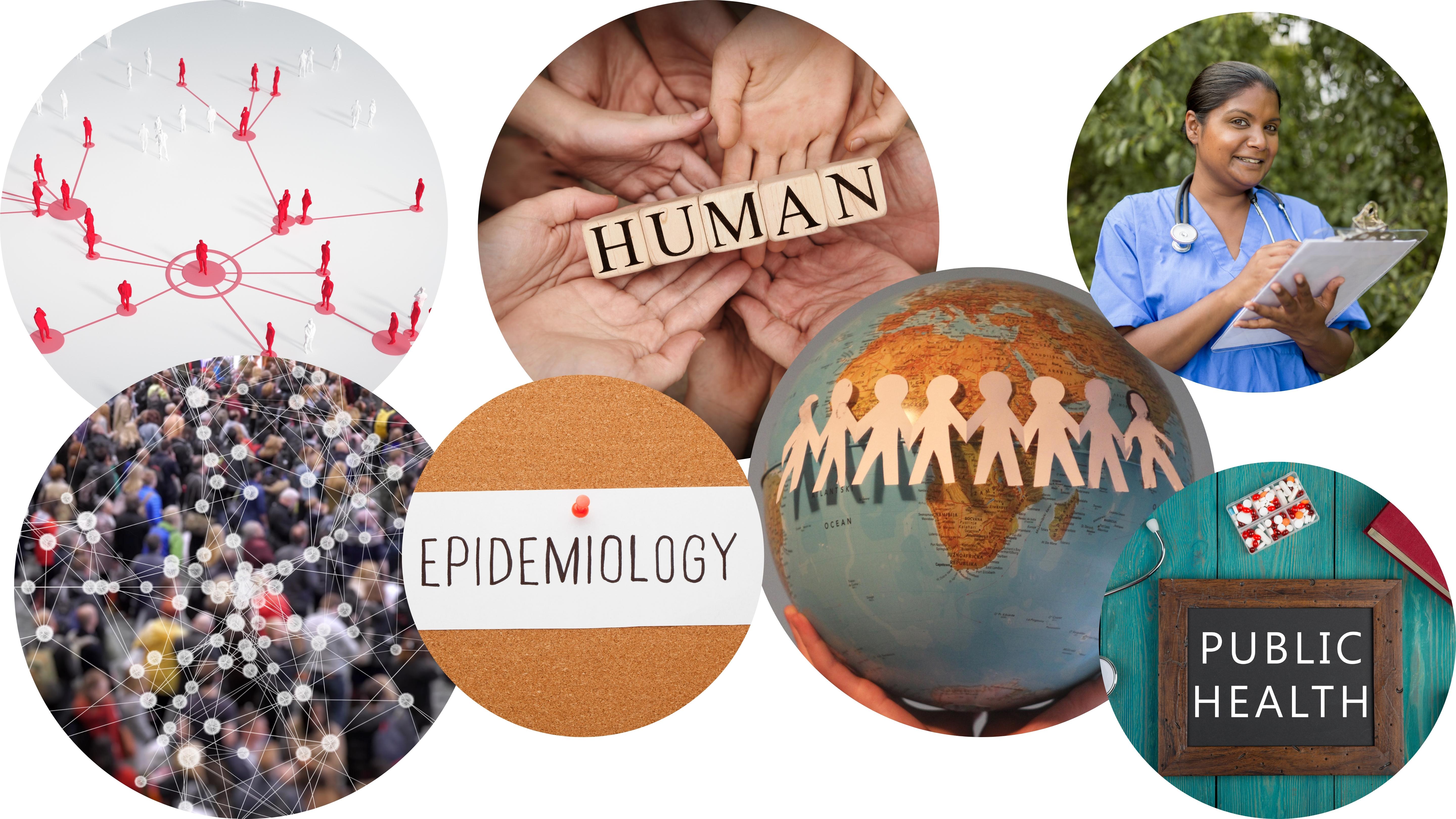 Competencies covered in this module:
Competencies covered in this module:- Demonstrate knowledge of established and evolving biomedical, clinical, epidemiological, and social-behavioral sciences, as well as the application of this knowledge to patient care.
- Apply principles of epidemiological sciences to the identification of health problems, risk factors, treatment strategies, resources, and disease prevention/health promotion efforts for patients and populations ( AAMC 2.4 )
Knowledge for Practice (AAMC)
- Describe and apply systematic methods to improve population health. (AACOM VI.)
- Identify the determinants of populations’ health.
- Identify sources of disparities in populations’ health and access to care.
Practice-Based Learning and Improvement (AACOM.)
- Assesses and addresses the determinants of health and illness factors contributing to health promotion and disease prevention (AACOM XII.)
Public Health Systems Competencies(AACOM.)
- Demonstrate an appreciation of the history of and contemporary issues in nursing and their impact on current nursing practice. (AACN VIII.5)
- Synthesize theories and concepts from liberal education to build an understanding of the human experience.
(AACN)
- Demonstrate knowledge of established and evolving biomedical, clinical, epidemiological, and social-behavioral sciences, as well as the application of this knowledge to patient care.
-
Module 2: Lesson 1:The Epidemiological Transition
Upon completion of this lesson, you will be able to:Learning Objectives:
- Define and discuss the epidemiological transition.
- Analyze how shifts in the epidemiological profile of disease have caused shifts in the structure and function of the health care system.
2 URLs, 1 Forum -
Module 2: Lesson 2: The Impact of the Epidemiological Transition on Humanism in Health and Healthcare
Upon completion of this lesson, you will be able to:Learning Objectives:
- Describe how late modern epidemiological transitions have contributed to a re-emerging emphasis on humanism in health and healthcare.
2 URLs, 1 Quiz -
Module 3. Medicalization and Social Control
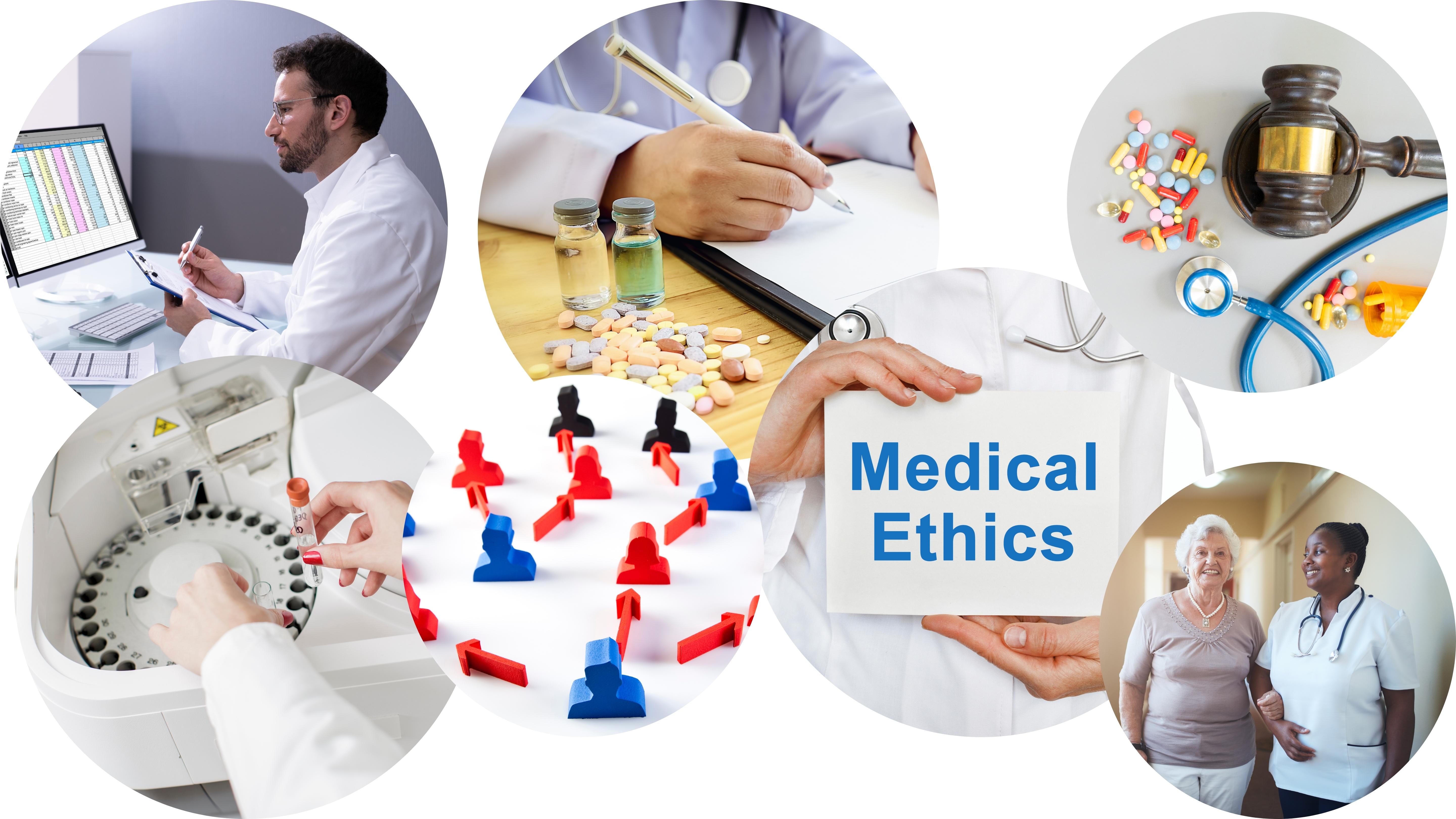 Competencies covered in this module:
Competencies covered in this module:- Demonstrate knowledge of established and evolving biomedical, clinical, epidemiological, and social-behavioural sciences, as well as the application of this knowledge to patient care. (AAMC 2)
- Apply principles of social-behavioural sciences to provision of patient care, including assessment of the impact of psycho-social and cultural influences on health, disease, care seeking, care compliance, and barriers to and attitudes toward care. (AAMC 2.5)
Knowledge for Practice (AAMC)
- Demonstrate a commitment to carrying out professional responsibilities and an adherence to ethical principles. (AAMC 5)
- Demonstrate a commitment to ethical principles pertaining to provision or withholding of care, confidentiality, informed consent, and business practices, including compliance with relevant laws, policies, and regulations. (AAMC 5.6)
Professionalism (AAMC)
- Demonstrate knowledge of and the ability to apply ethical principles in the practice and research of osteopathic medicine, particularly in the areas of provision or withholding of clinical care, confidentiality of patient information, informed consent, business practices, the conduct of research, and the reporting of research results. (AACOM V. 6)
Professionalism: Ethics
- Engage in ethical reasoning and actions to provide leadership in promoting advocacy, collaboration, and social justice as a socially responsible citizen. (AACN I. 6)
(AACN)
- Demonstrate knowledge of established and evolving biomedical, clinical, epidemiological, and social-behavioural sciences, as well as the application of this knowledge to patient care. (AAMC 2)
-
Module 3: Lesson 1: Medicalization and Social Control
Upon completion of this lesson, you will be able to:Learning Objectives:
- Define medicalization.
- Describe how medicalization reflects power dynamics inherent to medicine and health care.
Click here to start this lesson2 URLs -
Module 3: Lesson 2: Medicalization and Overdiagnosis
Upon completion of this lesson, you will be able to:Learning Objectives:
- Identify how medicalization leads to over-diagnosis and articulate why this may negatively impact patient care.
2 URLs -
Module 4: The Biopsychosocial Model
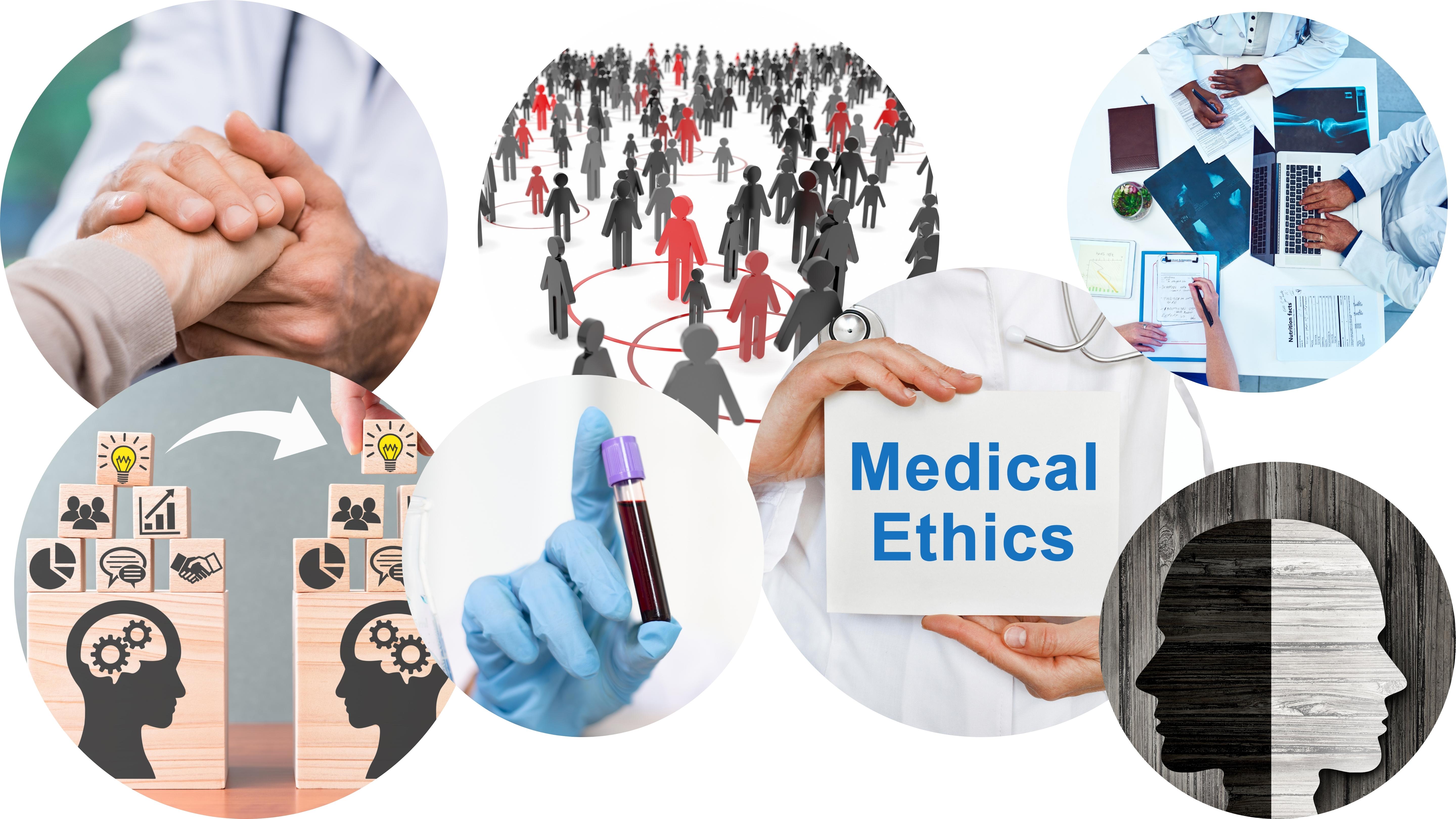 Competencies covered in this module:
Competencies covered in this module:- Demonstrate knowledge of established and evolving biomedical, clinical, epidemiological, and social-behavioral sciences, as well as the application of this knowledge to patient care. (AAMC 2)
- Apply principles of epidemiological sciences to the identification of health problems, risk factors, treatment strategies, resources, and disease prevention/health promotion efforts for patients and populations. (AAMC 2.4)
Knowledge for Practice (AAMC)
- Articulate basic biomedical science and epidemiological and clinical science principles related to patient presentation. (AACOM II. 1)
- Demonstrate an appreciation of the history of and contemporary issues in nursing and their impact on current nursing practice. (AACN VIII. 5)
Medical Knowledge (AACOM)
- Demonstrate knowledge of established and evolving biomedical, clinical, epidemiological, and social-behavioral sciences, as well as the application of this knowledge to patient care. (AAMC 2)
-
Module 4: Lesson 1: An Overview of the Biopsychosocial Model
Upon completion of this lesson, you will be able to:Learning Objectives:
- Define each aspect of the biopsychosocial model and describe each interaction with the others to form a more robust picture of health and illness in contrast to the traditional biomedical model.
- Describe potential shortcomings of the biopsychosocial model; in particular, analyze whether it is a sufficient framework for humanism in health and healthcare.
Click here to start this lesson2 URLs, 1 Quiz -
Module 5: The Birth of Bioethics and the Evolution of Humanism
 Competencies covered in this module:
Competencies covered in this module:- Demonstrate a commitment to carrying out professional responsibilities and an adherence to ethical principles. (AAMC 5)
- Demonstrate respect for patient privacy and autonomy. (AAMC 5.3)
- Demonstrate a commitment to ethical principles pertaining to provision or withholding of care, confidentiality, informed consent, and business practices, including compliance with relevant laws, policies, and regulations. (AAMC 5.6)
Professionalism (AAMC)
- Demonstrate knowledge of the behavioral and social sciences that provide the foundation for the professionalism competency, including medical ethics, social accountability and responsibility, and commitment to professional virtues and responsibilities. (AACOM V. 1)
- Demonstrate social accountability and responsibility (i.e. the welfare of the patient or society should supersede the physician’s self-interest). (AACOM V. 1c)
Professionalism: Knowledge (AACOM)
- Demonstrate knowledge of and the ability to apply ethical principles in the practice and research of osteopathic medicine, particularly in the areas of provision or withholding of clinical care, confidentiality of patient information, informed consent, business practices, the conduct of research, and the reporting of research results. (AACOM V. 6)
- Apply the ethical principles of autonomy, beneficence, non-malfeasance, fidelity, justice, and utility. (AACOM V. 6f)
Professionalism: Ethics (AACOM)
- Engage in ethical reasoning and actions to provide leadership in promoting advocacy, collaboration, and social justice as a socially responsible citizen. (AACN I. 6)
(AACN)
- Demonstrate a commitment to carrying out professional responsibilities and an adherence to ethical principles. (AAMC 5)
-
Module 5: Lesson 1: The Historical Evolution of Bioethics
Upon completion of this lesson, you will be able to:Learning Objectives:
- Describe the origins of bioethics as a discipline, including watershed cases in both medical research and clinical medicine and the development of its foci from acute dilemmas to broader social and humanistic aspects of ethics.
Click here to start this lesson1 URL -
Module 5: Lesson 2: Clinical Ethics Analysis
Upon completion of this lesson, you will be able to:Learning Objective:
- Discuss the principles of clinical ethics and articulate four key domains of analysis ("the four topics") of clinical ethics issues.
. Analyze the four key domains of clinical ethics analysis for where notions of humanism are manifest and where normative ethics analysis may not be fully humanistic.
1 URL - Discuss the principles of clinical ethics and articulate four key domains of analysis ("the four topics") of clinical ethics issues.
-
Module 6: The Science of Empathy
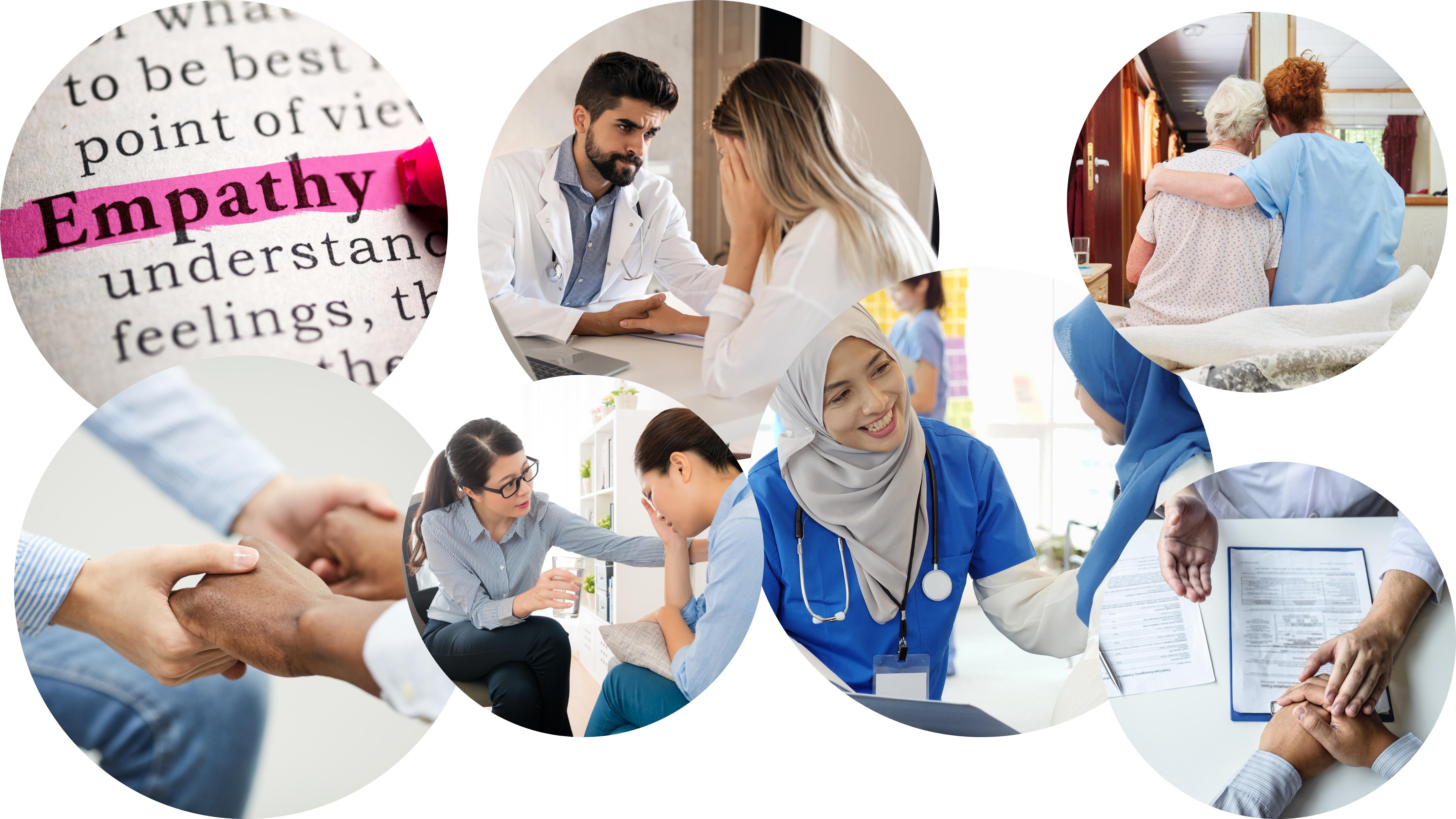 Competencies covered in this module:
Competencies covered in this module:- Provide patient-centered care that is compassionate, appropriate, and effective for the treatment of health problems and the promotion of health.
- Counsel and educate patients and their families to empower them to participate in their care and enable shared decision-making.
Patient Care (AAMC)
- Demonstrate knowledge of established and evolving biomedical, clinical, epidemiological, and social-behavioral sciences, as well as the application of this knowledge to patient care.
- Apply principles of social-behavioral sciences to the provision of patient care, including assessment of the impact of psychosocial and cultural influences on health, disease, care seeking, care compliance, and barriers to and attitudes toward care.
Knowledge for Practice (AAMC)
- Demonstrate interpersonal and communication skills that result in the effective exchange of information and collaboration with patients, their families, and health professionals.
- Demonstrate insight and understanding about emotions and human responses to emotions that allow one to develop and manage interpersonal interactions.
Interpersonal and Communication Skills (AAMC)
- Approach the patient with recognition of the entire clinical context, including mind-body and psychosocial interrelationships.
- Recognize and treat each patient as a whole person, integrating body, mind, and spirit.
- Demonstrate caring, compassionate, and empathetic behavior during the application of OMT in the clinical setting.
- Diagnose clinical conditions and plan patient care.
- Consider the patient’s perspective and values in diagnostic decision-making.
Osteopathic Principles and Practices (AACOM)
- Form a patient-centered, interprofessional, evidence-based management plan.
- Elicit the patient’s perspective on the current situation and modify the diagnostic and treatment plan as appropriate in response to the patient’s needs and preference.
- Recognize and respond appropriately to the ethical dimensions of clinical decision-making.
Patient Care (AACOM)
- Establish and maintain the physician-patient relationship.
- Explore the psychosocial, occupational, and biomechanical environment in which the patient lives and/or in which health care is administered.
- Conduct a patient-centered interview that includes the following.
- Communicate in a manner that demonstrates sensitivity to gender as well as to racial and cultural diversity.
Interpersonal and Communication Skills (AACOM)
- Demonstrate humanistic behavior, including respect, compassion, probity, honesty, and trustworthiness.
- Provide polite, considerate, and compassionate treatment to every patient.
Professionalism: Humanistic Behavior (AACOM)
- I.1: Integrate theories and concepts from liberal education into nursing practice.
- I.2: Synthesize theories and concepts from liberal education to build an understanding of the human experience.
- VIII.3: Promote the image of nursing by modeling the values and articulating the nursing profession's knowledge, skills, and attitudes.
(AACN)
- Provide patient-centered care that is compassionate, appropriate, and effective for the treatment of health problems and the promotion of health.
-
Module 6: Lesson 1: The Science of Empathy
Upon completion of this lesson, you will be able to:Learning Objectives:
- Describe the notion of empathy, and how it differs from sympathy.
- Describe the scientific basis for empathy and its contributions to interpersonal interactions and relationships.
- Analyze how the concept of empathy is critical to medical practice, and particularly important after the epidemiological transition (you'll need to draw on concepts from previous modules in this course to do so adequately).
2 URLs, 1 Forum -
Module 6: Lesson 2: Empathy in Patient Care
Upon completion of this lesson, you will be able to:Learning Objective:
- Describe how empathy affects measurable patient outcomes and the evidence supporting this in the research literature.
1 URL, 1 Quiz -
Module 7: Building Empathy: Practices of the Senses
 Competencies covered in this module:
Competencies covered in this module:- Demonstrate knowledge of established and evolving biomedical, clinical, epidemiological, and social-behavioral sciences, as well as the application of this knowledge to patient care.
- Apply principles of social-behavioral sciences to the provision of patient care, including assessment of the impact of psychosocial and cultural influences on health, disease, care seeking, care compliance, and barriers to and attitudes toward care.
Knowledge for Practice (AAMC)
- Demonstrate interpersonal and communication skills that result in the effective exchange of information and collaboration with patients, their families, and health professionals.
- Demonstrate sensitivity, honesty, and compassion in difficult conversations, including those about death, end of life, adverse events, bad news, disclosure of errors, and other sensitive topics.
Interpersonal and Communication Skills (AAMC)
- Demonstrate a commitment to carrying out professional responsibilities and an adherence to ethical principles.
- Demonstrate compassion, integrity, and respect for others.
Professionalism (AAMC)
- Demonstrate the qualities required to sustain lifelong personal and professional growth.
- 8.1 Develop the ability to use self-awareness of knowledge, skills, and emotional limitations to engage in appropriate help-seeking behaviors.
- 8.2 Demonstrate healthy coping mechanisms to respond to stress.
- 8.3 Manage conflict between personal and professional responsibilities.
- 8.8 Recognize that ambiguity is part of clinical health care and respond by utilizing appropriate resources in dealing with uncertainty.
Personal and Professional Development (AAMC)
- Approach the patient with recognition of the entire clinical context, including mind-body and psychosocial interrelationships.
- Recognize and treat each patient as a whole person, integrating body, mind, and spirit.
Osteopathic Principles and Practices (AACOM)
- Demonstrate knowledge of the behavioral and social sciences that provide the foundation for the professionalism competency, including medical ethics, social accountability and responsibility, and commitment to professional virtues and responsibilities.
- a. Explain why a physician must demonstrate honesty, integrity, and respect for the patient in every interaction.
- b. Recognize personal values, attitudes, and biases as they influence patient care.
- c. Demonstrate social accountability and responsibility (i.e., the welfare of the patient or society should supersede the physician’s self-interest).
- d. Assess the context of a patient’s social and economic situation, capacity for self-care, and ability to participate in shared decision-making.
Professionalism - Knowledge (AACOM)
- Demonstrate humanistic behavior, including respect, compassion, probity, honesty, and trustworthiness.
- Provide polite, considerate, and compassionate treatment to every patient.
Professionalism- Humanistic Behavior- (AACOM)
- Demonstrate understanding that he/she is a representative of the osteopathic profession and is capable of making valuable contributions as a member of this society; lead by example; provide for personal care and well-being by utilizing principles of wellness and disease prevention in the conduct of professional and personal life.
- Ensure that his/her mental, physical, or health condition does not have a negative impact on patient care or welfare.
- Identify personal sources of stress and apply appropriate interventions.
Professional and Personal Self-Care (AACOM)
- Required I: Liberal Education for Baccalaureate Generalist Nursing Practice
- Integrate theories and concepts from liberal education into nursing practice.
- Synthesize theories and concepts from liberal education to build an understanding of the human experience.
- Demonstrate tolerance for the ambiguity and unpredictability of the world and its effect on the healthcare system.
(AACN)
- Demonstrate knowledge of established and evolving biomedical, clinical, epidemiological, and social-behavioral sciences, as well as the application of this knowledge to patient care.
-
Module 7: Lesson 1: Working with literature
Upon completion of this lesson, you will be able to:Learning Objectives:
- Practice deep reading and introspection while reading narrative and articulate resulting insights that relate to the experience of illnesses and healthcare practice.
- Articulate the value of literature as a source of appreciation for the richness, diversity, and complexity of the human condition.
1 URL, 1 Forum -
Module 7: Lesson 2: Working with Visual Art
Upon completion of this lesson, you will be able to:Learning Objectives:
- Practice deliberate meditation and introspection while observing visual art articulate resulting insights that relate to the experience of illness and healthcare practice.
- Describe what visual art may represent about the individual that chose it.
2 URLs, 1 Forum -
Module 7: Lesson 3: Working with Poetry
Upon completion of this lesson, you will be able to:Learning Objectives:
- Describe how your understanding of your purpose and identity has been impacted by your experiences in medicine.
- Discuss what you have learned about yourself by reading poetry written by others.
Click here to start this lesson2 URLs, 2 Forums -
Module 7: Lesson 4: Working with Music
Upon completion of this lesson, you will be able to:Learning Objectives:
- Articulate the parallels between music and health care practice.
- Analyze how a practitioner might, using a deep analytical listening of music might, at least over time, develop greater facility with the humanistic aspects of patient care.
Click here to start this lesson2 URLs - Articulate the parallels between music and health care practice.
-
Module 8: Empathy in Pracice: Narrative Medicine/Narrative Communication
 Competencies covered in this module:
Competencies covered in this module:- Provide patient-centered care that is compassionate, appropriate, and effective for the treatment of health problems and the promotion of health.
- Counsel and educate patients and their families to empower them to participate in their care and enable shared decision-making.
Patient Care (AAMC:)
- Demonstrate knowledge of established and evolving biomedical, clinical, epidemiological and social-behavioral sciences, as well as the application of this knowledge to patient care.
- Apply principles of social-behavioral sciences to provision of patient care, including assessment of the impact of psychosocial and cultural influences on health, disease, care seeking, care compliance, and barriers to and attitudes toward care.
Knowledge for Practice (AAMC)
- Demonstrate interpersonal and communication skills that result in the effective exchange of information and collaboration with patients, their families, and health professionals.
- 4.1 Communicate effectively with patients, families, and the public, as appropriate, across a broad range of socioeconomic and cultural backgrounds.
- 4.6 Demonstrate sensitivity, honesty, and compassion in difficult conversations, including those about death, end of life, adverse events, bad news, disclosure of errors, and other sensitive topics.
- 4.7 Demonstrate insight and understanding about emotions and human responses to emotions that allow one to develop and manage interpersonal interactions.
Interpersonal and Communication Skills (AAMC)
- Approach the patient with recognition of the entire clinical context, including mind-body and psychosocial interrelationships.
- Recognize and treat each patient as a whole person, integrating body, mind, and spirit.
- Demonstrate caring, compassionate, and empathetic behavior during the application of OMT in the clinical setting.
- Diagnose clinical conditions and plan patient care.
- Consider the patient’s perspective and values in diagnostic decision-making.
Osteopathic Principles and Practices (AACOM)
- Form a patient-centered, interprofessional, evidence-based management plan.
- Elicit the patient’s perspective on the current situation and modify the diagnostic and treatment plan as appropriate in response to the patient’s needs and preference.
- Recognize and respond appropriately to the ethical dimensions of clinical decision-making.
Patient Care (AACOM)
- Establish and maintain the physician-patient relationship.
- Explore the psychosocial, occupational, and biomechanical environment in which the patient lives and/or in which health care is administered.
- Conduct a patient-centered interview that includes the following.
- Communicate in a manner that demonstrates sensitivity to gender as well as to racial and cultural diversity.
Interpersonal and Communication Skills (AACOM)
- Humanistic Behavior - Demonstrate humanistic behavior, including respect, compassion, probity, honesty, and trustworthiness.
- Provide polite, considerate, and compassionate treatment to every patient.
Professionalism (AACOM)
- I.1: Integrate theories and concepts from liberal education into nursing practice.
- I.2: Synthesize theories and concepts from liberal education to build an understanding of the human experience.
- VI.3: Incorporate effective communication techniques, including negotiation and conflict resolution, to produce positive professional working relationships.
(AACN)
- Provide patient-centered care that is compassionate, appropriate, and effective for the treatment of health problems and the promotion of health.
-
Module 8: Lesson 1: Narrative Medicine: Connecting with Patients
Upon completion of this lesson, you will be able to:Learning Objectives:
- Articulate the way in which narrative can enable a richer understanding of patients and their illness experiences.
- Describe how a narrative approach to patience care can help connect the patient and the clinician in a relationship.
- Define 7 key concepts necessary to eliciting a patient's narrative.
- Describe key questions that are useful for eliciting and elaborating patient narrative in a clinical "conversation."
Click here to start this lesson3 URLs, 1 Quiz - Articulate the way in which narrative can enable a richer understanding of patients and their illness experiences.
-
Module 9: Self Care: Caring for Self to Care for Others
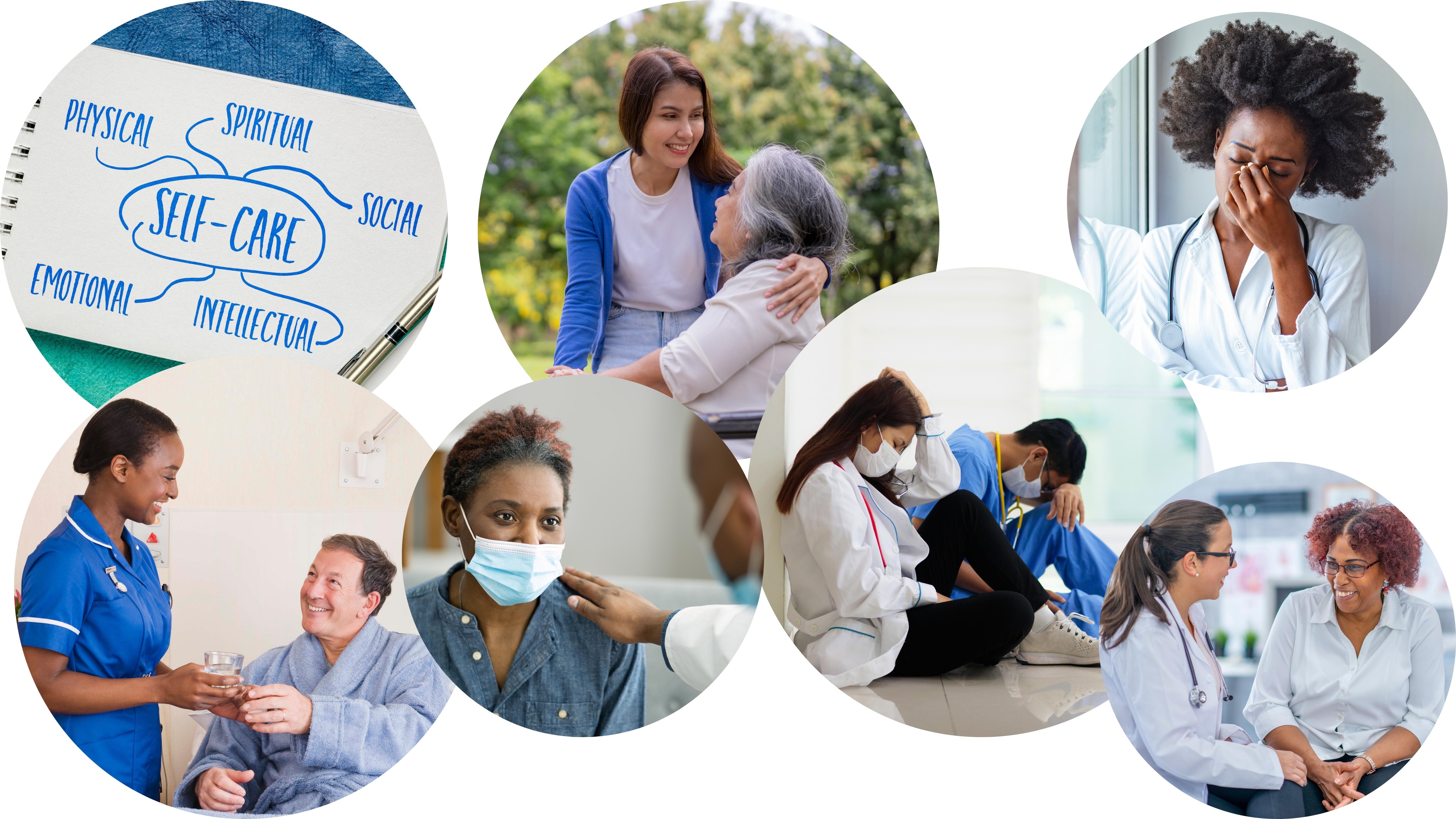 Competencies covered in this module:
Competencies covered in this module:- Demonstrate knowledge of established and evolving biomedical, clinical, epidemiological, and social-behavioral sciences, as well as the application of this knowledge to patient care. (AAMC 2)
- Apply principles of social-behavioral sciences to the provision of patient care, including assessment of the impact of psychosocial and cultural influences on health, disease, care seeking, care compliance, and barriers to and attitudes toward care. (AAMC 2.5)
Knowledge for Practice (AAMC)
- Demonstrate the qualities required to sustain lifelong personal and professional growth. (AAMC 8)
- Develop the ability to use self-awareness of knowledge, skills, and emotional limitations to engage in appropriate help-seeking behaviors. (AAMC 8.1)
- Demonstrate healthy coping mechanisms to respond to stress. (AAMC 8.2)
Personal and Professional Development (AAMC)
- Ensure that his/her mental, physical, or health condition does not have a negative impact on patient care or welfare. (AACOM V. 8b)
- Identify personal sources of stress, and apply appropriate interventions. (AACOM V. 8f)
Professionalism: Professional and Personal Self-Care (AACOM)
- Recognize the relationship between personal health, self-renewal, and the ability to deliver sustained quality care. (AACN 14)
(AACN)
- Demonstrate knowledge of established and evolving biomedical, clinical, epidemiological, and social-behavioral sciences, as well as the application of this knowledge to patient care. (AAMC 2)
-
Module 9: Lesson 1: Understanding Burnout in Healthcare: Causes and Consequences
Upon completion of this lesson, you will be able to:Learning Objective:
- Define burnout and articulate its various causes among healthcare professionals.
Click here to start this lesson2 URLs - Define burnout and articulate its various causes among healthcare professionals.
-
Module 9: Lesson 2: Self-care and Patient Care
Upon completion of this lesson, you will be able to:Learning Objectives:
- Describe ways that burnout can be mitigated in healthcare, both at the individual and system levels.
- Describe the potential consequences of burnout for both the provider and for patient care.
Click here to start this lesson3 URLs -
Module 9: Lesson 3: Empathy and Self-care at Odds?: Thinking Realistically and Critically
Upon completion of this lesson, you will be able to:Learning Objective:
- Analyze the dilemmas of empathy among health professionals with respect to humanistic commitment to patients and maintaining an appropriate professional detachment.
Click here to start this lesson3 URLs -
Module 10: Problems of Otherness and Dilemmas of Difference
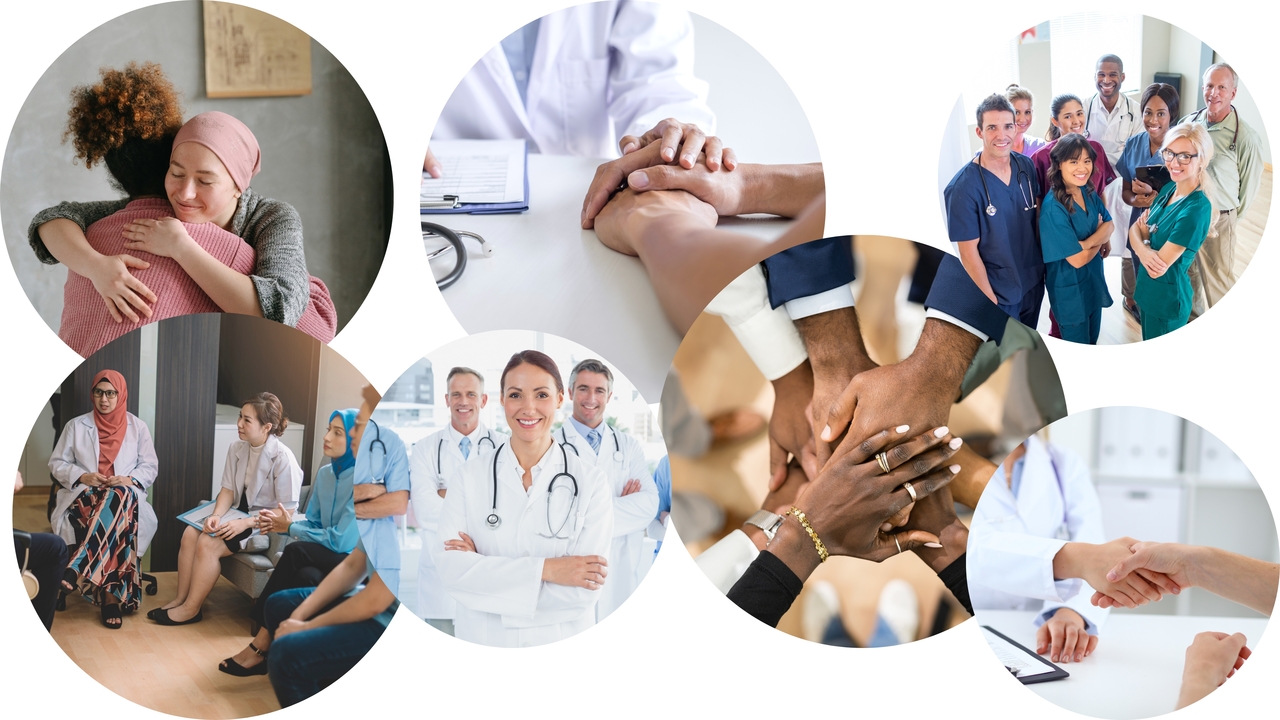
Competencies covered in this module:
- Demonstrate knowledge of established and evolving biomedical, clinical, epidemiological, and social-behavioral sciences, as well as the application of this knowledge to patient care.
- Apply principles of social-behavioral sciences to the provision of patient care, including assessment of the impact of psychosocial and cultural influences on health, disease, care seeking, care compliance, and barriers to and attitudes toward care.
Knowledge for Practice (AAMC)
- Demonstrate interpersonal and communication skills that result in the effective exchange of information and collaboration with patients, their families, and health professionals.
- Communicate effectively with patients, families, and the public, as appropriate, across a broad range of socioeconomic and cultural backgrounds.
Interpersonal and Communication Skills (AAMC)
- Demonstrate the ability to engage in an interprofessional team in a manner that optimizes safe, effective patient- and population-centered care.
- Work with other health professionals to establish and maintain a climate of mutual respect, dignity, diversity, ethical integrity, and trust.
Interprofessional Collaboration (AAMC)
- Gather accurate data related to the patient encounter.
- Apply appropriate knowledge to the medical interview and demonstrate the ability to identify and/or address psychosocial, cultural, religious, health maintenance, and risk factor issues.
- Health promotion and disease prevention (HPDP).
- Demonstrate cultural awareness and sensitivity when communicating with the patient, family, and caregivers.
Patient Care (AACOM)
- Accountability -Demonstrate accountability to patients, society, and the profession, including the duty to act in response to the knowledge of professional behavior of others.
- Demonstrate commitment to underserved, vulnerable, disadvantaged, disenfranchised, and special populations.
- Cultural Competency - Demonstrate awareness of and proper attention to issues of culture, religion, age, gender, sexual orientation, and mental and physical disabilities.
- Treat all patients, colleagues, and others fairly, ensuring that no group is favored at any other expense.
- Openly discuss cultural issues, and be responsive to cultural cues.
- Demonstrate how to cope with differences in people in a constructive way.
Professionalism (AACOM)
- Describe and apply systematic methods to improve population health.
- a.Identify the determinants of populations’ health.
- b. Identify sources of disparities in populations’ health and access to care.
- c.Identify vulnerable or marginalized populations within those served, and respond appropriately.
Practice-Based Learning and Improvement (AACOM)
- Assess health/illness beliefs, values, attitudes, and practices of individuals, families, groups, communities, and populations.
- Advocate for social justice, including a commitment to the health of vulnerable populations and the elimination of health disparities.
Required VII: Clinical Prevention and Population Health (AACN)
- Reflect on one’s own beliefs and values as they relate to professional practice.
- Communicate to the healthcare team one’s personal bias on difficult healthcare decisions that impact one’s ability to provide care.
Required VIII: Professionalism and Professional Values (AACN)
- Demonstrate knowledge of established and evolving biomedical, clinical, epidemiological, and social-behavioral sciences, as well as the application of this knowledge to patient care.
-
Module 10: Lesson 1: Problematics of Otherness
Upon completion of this lesson, you will be able to:Learning Objectives:
- Identify the notion of otherness/othering and how it manifests in the health care setting.
- Describe the dilemma of otherness with respect to attempts to address social inequalities and analyze whether it is possible to engage inequality without contributing to the othering of marginalized groups.
Click here to start this lesson2 URLs, 1 Quiz -
Module 11. Marginalization (Choose at least 5 lessons to complete from those available, based on your interests and educational and professional needs.)
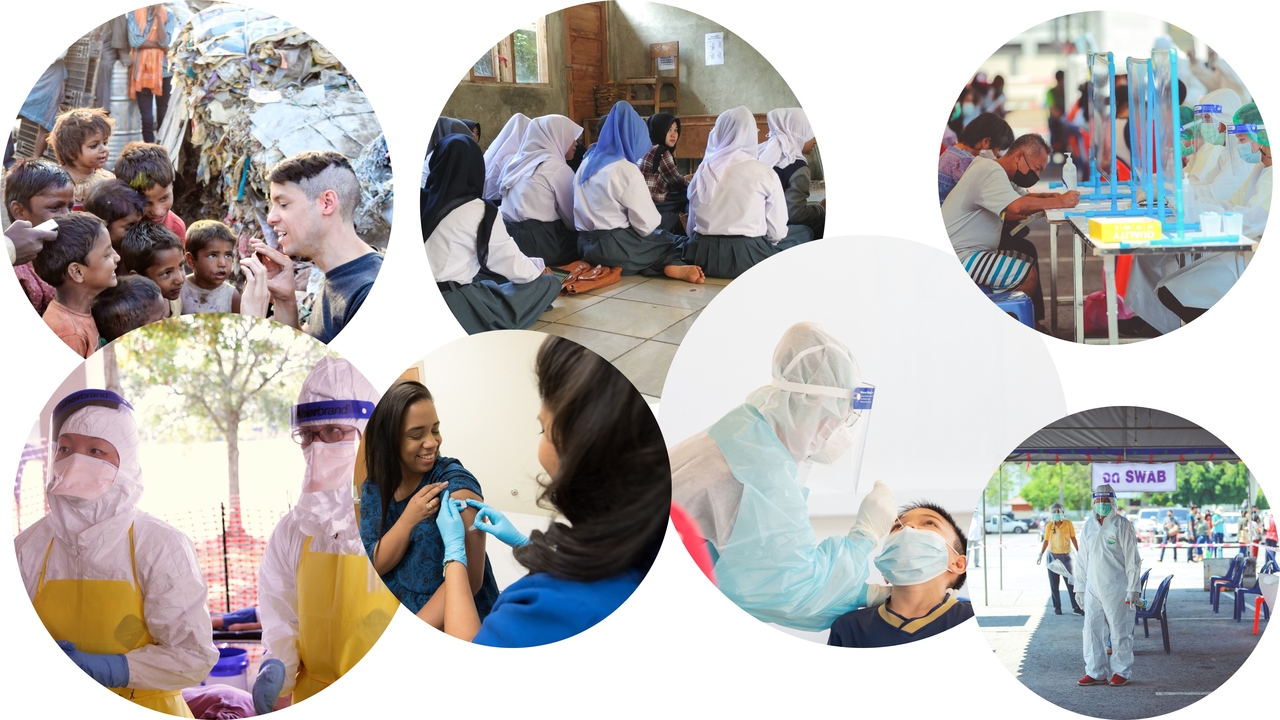 Competencies covered in this module:
Competencies covered in this module:Knowledge for Practice (AAMC)
Demonstrate knowledge of established and evolving biomedical, clinical, epidemiological, and social-behavioral sciences, as well as the application of this knowledge to patient care. (AAMC 2)
Apply principles of epidemiological sciences to the identification of health problems, risk factors, treatment strategies, resources, and disease prevention/health promotion efforts for patients and populations. (AAMC 2.4)
Apply principles of social-behavioral sciences to provision of patient care, including assessment of the impact of psychosocial and cultural influences on health, disease, care seeking, care compliance, and barriers to and attitudes toward care. (AAMC 2.5)
Professionalism (AAMC)
Demonstrate a commitment to carrying out professional responsibilities and an adherence to ethical principles. (AAMC 5)
Demonstrate accountability to patients, society, and the profession. (AAMC 5.4)
Demonstrate sensitivity and responsiveness to a diverse patient population, including but not limited to diversity in gender, age, culture, race, religion, disabilities, and sexual orientation. (AAMC 5.5)
Patient Care (AACOM)
Demonstrate cultural awareness and sensitivity when communicating with the patient, family, and caregivers. (AACOM III. 5g)
Professionalism: Cultural Competency (AACOM)
Demonstrate awareness of and proper attention to issues of culture, religion, age, gender, sexual orientation, and mental and physical disabilities. (AACOM V. 7)
Demonstrate how to cope with differences in people in a constructive way. (AACOM V. 7d)
Practice-Based Learning and Improvement (AACOM)
Describe and apply systematic methods to improve population health. (AACOM VI. 5)
Identify the determinants of populations’ health. (AACOM VI. 5a)
Identify sources of disparities in populations’ health and access to care. (AACOM VI. 5b)
Identify vulnerable or marginalized populations within those served, and respond appropriately. (AACOM VI. 5c)
Cultural Competencies (AACOM)
Demonstrate an understanding of the scope of culture and the elements that form and define it. (AACOM IX. 1)
Recognize personal and professional tendencies toward bias and stereotyping and work to counter them. (AACOM IX. 2)
Understand the public health implications of cultural competence in health care. (AACOM IX. 3)
Demonstrate familiarity with basic religious and cultural beliefs that affect patients’ understanding of the etiology of their illness and/or the efficacy of their treatment. (AACOM IX. 4)
Use the cultural profile and history in the treatment of individual patients and record them appropriately in the medical record. (AACOM IX. 10)
Use the cultural profile and history with individual patients to assess healthcare needs in the community. (AACOM IX. 11)
Public Health Systems Competencies (AACOM)
Assesses and address the determinants of health and illness factors contributing to health promotion and disease prevention. (AACOM X11. 2)
Apply basic public health principles, practices, and sciences to the practice of osteopathic medicine.(AACOM X11. 4)
Understand and apply knowledge of cultural differences to improve public health among divergent populations. (AACOM X11. 7)
Global Health Competencies (AACOM)
Identify and treat individual patients with varying cultural beliefs regarding health, disease, and patient care. (AACOM XIII. 6)
Essential VII: Clinical Prevention and Population Health - Assess health/illness beliefs, values, attitudes, and practices of individuals, families, groups, communities, and populations. (AACN 3)
Essential VIII: Professionalism and Professional Values (AACN 6)
Reflect on one’s own beliefs and values as they relate to professional practice. (AACN 6)
Professionalism: Demonstrate sensitivity and responsiveness to a diverse patient population, including but not limited to diversity in gender, age, culture, race, religion, disabilities, and sexual orientation (AAMC 5.5)
-
Module 11: Lesson 1: Global Health and Cross-Cultural Practice
Upon completion of this lesson, you will be able to:Learning Objectives:
- Articulate best practices for conducting ethical and humanistic global health work.
- Analyze the ethical dilemmas inherent to global health work and offer insights into how to navigate the potential for harm by medical volunteers to underresourced countries by drawing on global health best practices.
- Identify the causes and ethical dilemmas posed by medical “brain drain” (the migration of health professionals from relatively resource poor nations to wealthier nations with less actual need).
Click here to start this lesson3 URLs -
Module 11: Lesson 2: Issues of Class and Poverty
Upon completion of this lesson, you will be able to:Learning Objectives:
- Articulate the impact of socioeconomic status on patients’ health status and health behaviors.
- Demonstrate critical thinking about the needs of patients who face socioeconomic disadvantage and articulate creative approaches to clinical care that are sensitive to the challenges they face.
Click here to start this lesson1 URL - Articulate the impact of socioeconomic status on patients’ health status and health behaviors.
-
Module 11: Lesson 3: Race/Ethnictiy and Health
Upon completion of this lesson, you will be able to:Learning Objectives:
- Identify racial or ethnic minorities in a society that are marginalized.
- Identify multiple pathways by which structures of marginalization directed at ethnic and racial minorities lead to poorer health.
Click here to start this lesson3 URLs, 1 Forum - Identify racial or ethnic minorities in a society that are marginalized.
-
Module 11: Lesson 4: The Health of Immigrants, Refugees, and Displaced Persons
Upon completion of this lesson, you will be able to:Learning Objectives:
- Discuss different perspectives on the ethical obligation to provide health care to undocumented immigrants.
- Articulate the impact of immigration and/or refugee status on patients’ health and their experiences with health and health care.
- Demonstrate critical thinking about the needs of patients who face health disadvantages because of their immigrant/refugee status and articulate creative approaches to clinical care that are sensitive to the challenges they face.
Click here to start this lesson3 URLs - Discuss different perspectives on the ethical obligation to provide health care to undocumented immigrants.
-
Module 11: Lesson 5: Gender and Health
Upon completion of this lesson, you will be able to:Learning Objectives:
- Articulate the impact of gender on patients’ health and their experiences with health and health care.
- Demonstrate critical thinking about the needs of patients who face health disadvantages because of gender norms and associated stigmas and articulate creative approaches to clinical care that are sensitive to the challenges they face.
Click here to start this lesson2 URLs - Articulate the impact of gender on patients’ health and their experiences with health and health care.
-
Module 11: Lesson 6: LGBTQ+ Persons and Health
Upon completion of this lesson, you will be able to:Learning Objectives:
- Articulate the social and humanistic factors affecting the health of patients who identify as LGBTQ+, including their experiences in society at large, and the health care system in particular.
- Demonstrate critical thinking about the needs of patients who face health disadvantages because of their identification as LGBTQ+ and associated stigmas and articulate creative approaches to clinical care that are sensitive to the challenges they
face.
Click here to start this lesson2 URLs - Articulate the social and humanistic factors affecting the health of patients who identify as LGBTQ+, including their experiences in society at large, and the health care system in particular.
-
Module 11: Lesson 7: Incarcerated and Formerly Incarcerated Persons
Upon completion of this lesson, you will be able to:Learning Objectives:
- Articulate the social and humanistic factors affecting the health of patients who are incarcerated or formerly incarcerated, including their experiences in society at large, and the health care system in particular.
- Describe ethical dilemmas that can emerge for clinical practitioners caring for patients who are incarcerated or were formerly incarcerated.
- Demonstrate critical thinking about the needs of patients who face health disadvantages because of incarceration status and associated stigmas and articulate creative approaches to clinical care that are sensitive to the challenges they face.
- Compare the difference between the minimum care a physician is obligated to provide within a criminal justice setting from the standard they are held to in the free world and describe measures that you could take as a physician to anticipate and meet the health needs of incarcerated or formerly incarcerated patients (see in particular the AMA Journal of Ethics case study.
Click here to start this lesson6 URLs - Articulate the social and humanistic factors affecting the health of patients who are incarcerated or formerly incarcerated, including their experiences in society at large, and the health care system in particular.
-
Module 11: Lesson 8: Disability, Health, and Healthcare
Upon completion of this lesson, you will be able to:Learning Objectives:
- Articulate the social and humanistic factors affecting the health of patients who are living with disability.
- Describe different models used for understanding disability and the advantages and disadvantages that come with seeing disability in terms of each of these models.
- Demonstrate critical thinking about the clinical needs of patients who are living with disabilities and articulate creative approaches to clinical care that are sensitive to the challenges they face.
Click here to start this lesson3 URLs - Articulate the social and humanistic factors affecting the health of patients who are living with disability.
-
Module 11: Lesson 9: Health, Humanism, and Aging
Upon completion of this lesson, you will be able to:Learning Objectives:
- Articulate the social and humanistic aspects of aging, particularly with respect to how older people experience aging.
- Describe ways that ageism manifests in the health care setting at both systemic and clinical levels and articulate ways that practitioners can challenge ageism and its effects.
Click here to start this lesson3 URLs - Articulate the social and humanistic aspects of aging, particularly with respect to how older people experience aging.
-
Module 11: Lesson 10: Children, Health, and Humanism
Upon completion of this lesson, you will be able to:Learning Objectives:
- Articulate the social and humanistic aspects of childhood, particularly with respect to how children experience illness.
- Describe ways that clinical care for children can use humanistic practices to improve children's illness experiences and coping.
Click here to start this lesson2 URLs - Articulate the social and humanistic aspects of childhood, particularly with respect to how children experience illness.
-
Module 11: Lesson 11: Religion/Spirituality and Health
Upon completion of this lesson, you will be able to:Learning Objectives:
- Articulate how religion and spirituality affect patient experiences of illness and their relationships with their health care practitioners.
- Describe ways that clinical care for children can use humanistic practices to improve children's illness experiences and coping.
Click here to start this lesson3 URLs, 1 Forum, 1 Quiz - Articulate how religion and spirituality affect patient experiences of illness and their relationships with their health care practitioners.
-
Module 12: From Cultural Competency to Cultural Humility: Habits of Respectful Curiosity
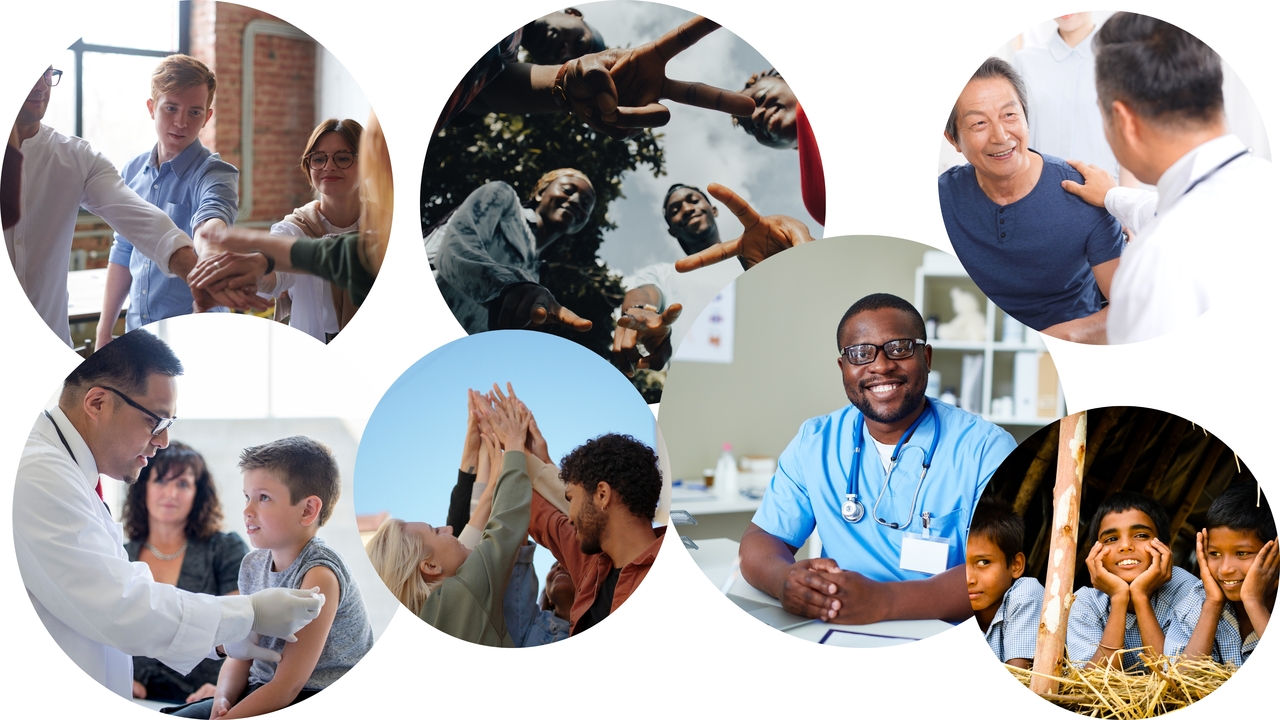 Competencies covered in this module:
Competencies covered in this module:- Demonstrate knowledge of established and evolving biomedical, clinical, epidemiological, and social-behavioral sciences, as well as the application of this knowledge to patient care. (AAMC 2)
- Apply principles of epidemiological sciences to the identification of health problems, risk factors, treatment strategies, resources, and disease prevention/health promotion efforts for patients and populations. (AAMC 2.4)
- Apply principles of social-behavioral sciences to provision of patient care, including assessment of the impact of psychosocial and cultural influences on health, disease, care seeking, care compliance, and barriers to and attitudes toward care. (AAMC 2.5)
- Demonstrate a commitment to carrying out professional responsibilities and an adherence to ethical principles. (AAMC 5)
- Demonstrate accountability to patients, society, and the profession. (AAMC 5.4)
- Demonstrate sensitivity and responsiveness to a diverse patient population, including but not limited to diversity in gender, age, culture, race, religion, disabilities, and sexual orientation. (AAMC 5.5)
- Demonstrate awareness of and proper attention to issues of culture, religion, age, gender, sexual orientation, and mental and physical disabilities. (AACOM V. 7)
- Treat all patients, colleagues, and others fairly, ensuring that no group is favored at the expense of any other. (AACOM V. 7a)
- Openly discuss cultural issues, and be responsive to cultural cues. (AACOM V. 7c)
- Demonstrate how to cope with differences in people in a constructive way. (AACOM V. 7d)
- Demonstrate an understanding of the scope of culture and the elements that form and define it. (AACOM IX. 1)
- Recognize personal and professional tendencies toward bias and stereotyping and work to counter them. (AACOM IX. 2)
- Understand the public health implications of cultural competence in health care. (AACOM IX. 3)
- Demonstrate familiarity with basic religious and cultural beliefs that affect patients’ understanding of the etiology of their illness and/or the efficacy of their treatment. (AACOM IX. 4)
- Use the cultural profile and history with individual patients to assess healthcare needs in the community. (AACOM IX. 11)
Knowledge for Practice (AAMC)
Professionalism (AAMC)
Professionalism: Cultural Competency (AACOM)
Essential VII: Clinical Prevention and Population Health (AACN)- Assess health/illness beliefs, values, attitudes, and practices of individuals, families, groups, communities, and populations. (AACN 3)
- Reflect on one’s own beliefs and values as they relate to professional practice. (AACN 6)
- Communicate to the healthcare team one’s personal bias on difficult healthcare decisions that impact one’s ability to provide care. (AACN 8)
Essential VIII: Professionalism and Professional Values (AACN)
- Demonstrate knowledge of established and evolving biomedical, clinical, epidemiological, and social-behavioral sciences, as well as the application of this knowledge to patient care. (AAMC 2)
-
Module 12: Lesson 1: From cultural competence to cultural humility
Upon completion of this lesson, you will be able to:Learning Objectives:
- Interrogate and discuss the limits of cultural competence as a humanistic enterprise in healthcare.
- Analyze and describe the differences between cultural competency and cultural humility.
Click here to start this lesson2 URLs, 1 Forum - Interrogate and discuss the limits of cultural competence as a humanistic enterprise in healthcare.
-
Module 12: Lesson 2: Practices of Humility in Healthcare
Upon completion of this lesson, you will be able to:Learning Objective:
- Describe best practices for integrating cultural humility into patient care.
Click here to start this lesson2 URLs -
Module 12: Lesson 3: From Cultural Humility to Structural Competency and Social Justice
Upon completion of this lesson, you will be able to:Learning Objectives:
- Describe the limitations of "cultural humility" even insofar as it improves on the concept of "cultural competency."
- Analyze and describe the implications of "structural competency" for patient care.
Click here to start this lesson1 URL -
Module 13: The Future of Humanism in Health and Health Care
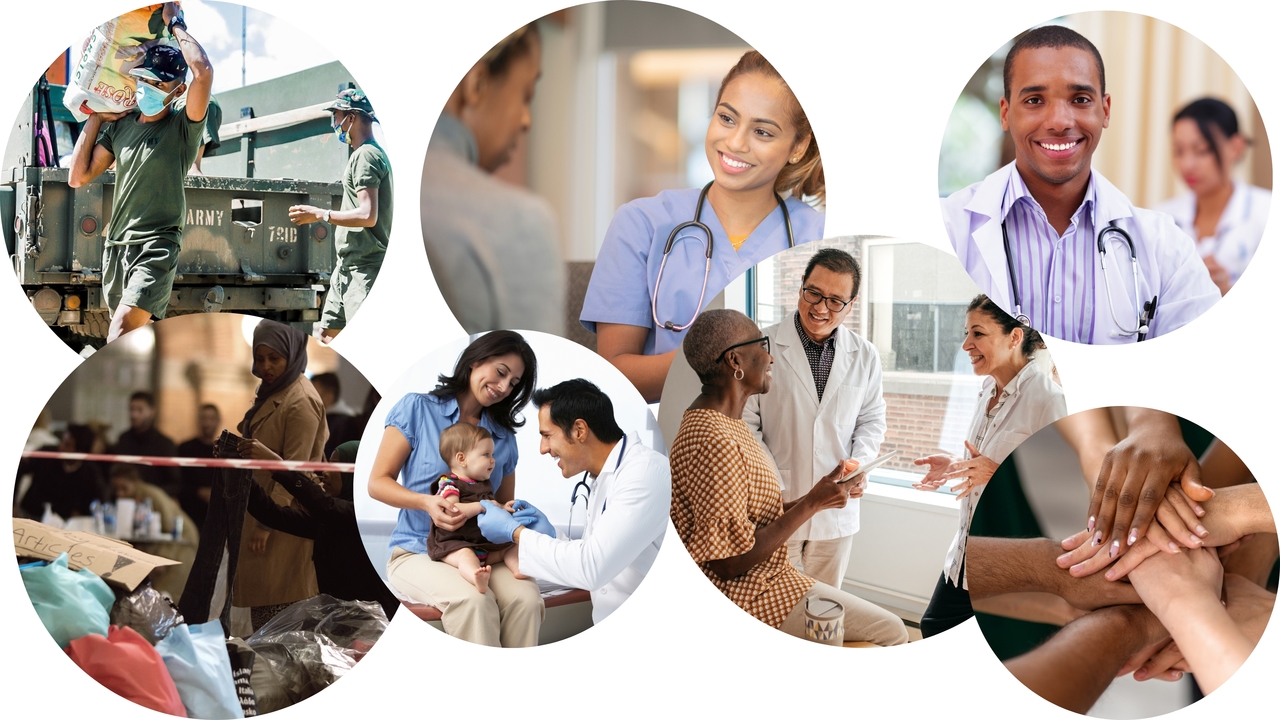 Competencies covered in this module:
Competencies covered in this module:- Demonstrate a commitment to carrying out professional responsibilities and an adherence to ethical principles. (AAMC 5)
- Demonstrate a commitment to ethical principles pertaining to provision or withholding of care, confidentiality, informed consent, and business practices, including compliance with relevant laws, policies, and regulations. (AAMC 5.6)
- Demonstrate an awareness of and responsiveness to the larger context and system of health care, as well as the ability to call effectively on other resources in the system to provide optimal health care. (AAMC 6)
- Demonstrate the qualities required to sustain lifelong personal and professional growth. (AAMC 8)
- Provide leadership skills that enhance team functioning, the learning environment, and/or the health care delivery system. (AAMC 8.6)
- Demonstrate humanistic behavior, including respect, compassion, probity, honesty, and trustworthiness. (AACOM V. 2)
- Demonstrate openness, honesty, and trustworthiness during direct communication with patients and their families and in the writing of reports, the signing of forms, and the provision of evidence in litigation or other formal inquiries. (AACOM V. 2d)
- Demonstrate understanding of how patient care and professional practices affect other health care professionals, health care organizations, and society. (AACOM VII. 2)
- Demonstrate understanding of how current issues in the world are affecting the delivery of health care to patients and to the community. (AACOM VII. 2g)
- Engage in ethical reasoning and actions to provide leadership in promoting advocacy, collaboration, and social justice as a socially responsible citizen. (AACN I. 6)
Professionalism (AAMC)
Systems-Based Practice (AAMC)
Personal and Professional Development (AAMC)
Professionalism: HUMANISTIC BEHAVIOR (AACOM)
Systems-Based Practice (AACOM)
(AACN)
- Demonstrate a commitment to carrying out professional responsibilities and an adherence to ethical principles. (AAMC 5)
-
Module 13: Lesson 1: The Future of Humanism in Medicine
Upon completion of this lesson, you will be able to:Learning Objective:
- Revisit and describe the value of humanism for health and health care now and in the coming decades (in ways that now draw on all that you've learned in this course).
Click here to start this lesson2 URLs - Revisit and describe the value of humanism for health and health care now and in the coming decades (in ways that now draw on all that you've learned in this course).
-
Module 13: Lesson 2: Humanism and Technology: Threat or Opportunity
Upon completion of this lesson, you will be able to:Learning Objective:
- Discuss how increasing technocratization and autonomation may threaten the humanistic elements, but also how technology might be used to amplify the humanistic elements, of health and healthcare.
Click here to start this lesson2 URLs - Discuss how increasing technocratization and autonomation may threaten the humanistic elements, but also how technology might be used to amplify the humanistic elements, of health and healthcare.
-
Module 13: Lesson 3: Directions Forward
Upon completion of this lesson, you will be able to:Learning Objective:
- Describe goals and strategies for integrating the insights throughout this course into clinical practice, particularly at the bedside, but also within the structures and functions of your institutions and the workflow of your practices.
Click here to start this lesson1 URL, 1 Quiz - Describe goals and strategies for integrating the insights throughout this course into clinical practice, particularly at the bedside, but also within the structures and functions of your institutions and the workflow of your practices.
-
Course and Self Evaluation & Certificate
 In this section, you can provide feedback about this course to help us make NextGenU.org better. Once evaluations are completed, you will be able to download your certificate of completion.
In this section, you can provide feedback about this course to help us make NextGenU.org better. Once evaluations are completed, you will be able to download your certificate of completion.

